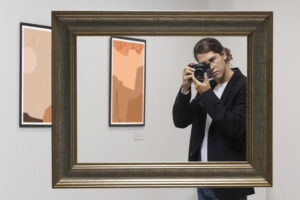In today’s digital era, businesses, marketers, and content creators are constantly looking for the most effective way to produce high-quality visuals. Two primary methods dominate the industry: Computer-Generated Imagery (CGI) and traditional photography. Both approaches come with distinct advantages and drawbacks, particularly in terms of cost, quality, flexibility, and efficiency.
This article provides an in-depth comparison of CGI and traditional photography, examining their pros and cons in different applications, cost considerations, workflow efficiency, and future trends. By the end, you’ll have a clear understanding of which method best suits your needs.
Understanding CGI and Traditional Photography
What is CGI?
CGI (Computer-Generated Imagery) refers to the process of creating digital images using specialized software such as Blender, Maya, and Cinema 4D . Instead of capturing a real-world scene, CGI artists design, model, and render objects, environments, and even realistic human figures.

Key Benefits of CGI:
- Unlimited Creative Control: CGI allows full customization of elements like lighting, shadows, textures, and colors.
- No Physical Constraints: No need for expensive studio setups, location scouting, or product prototypes.
- Highly Scalable: Can be easily modified for different use cases without additional production costs.
- Ideal for Digital and E-commerce Use: Many online retailers use CGI to showcase products from multiple angles without physically manufacturing them.
What is Traditional Photography?
Traditional photography captures real-world scenes using cameras, lighting, and physical setups. This method has been the gold standard for centuries, providing images with natural textures, depth, and authenticity.
Key Benefits of Traditional Photography:
- Authenticity and Realism: Photos capture natural imperfections that enhance trust and relatability.
- Better for Human Subjects: When photographing people, real emotions and expressions are better conveyed through photography than CGI.
- Immediate Visual Feedback: Photographers can instantly see and adjust compositions, lighting, and angles during a shoot.
- Higher Consumer Trust: Studies suggest that consumers trust real photos more than digitally created visuals, especially in advertising.
Cost Analysis: CGI vs. Traditional Photography
One of the most critical deciding factors is cost. While both methods require financial investment, they differ in how expenses accumulate over time.
Initial Costs
- CGI: Requires a significant upfront investment in software (e.g., Adobe Substance, ZBrush) and powerful computing hardware capable of rendering complex images.
- Traditional Photography: Involves purchasing high-end cameras, lenses, lighting equipment, and renting or setting up a studio space.
Production Costs
- CGI: Hiring skilled 3D artists can be costly, and complex renderings may require hours or days of processing time.
- Traditional Photography: Includes hiring professional photographers, renting locations, paying for models, and covering travel expenses.
Post-Production Costs
- CGI: Extensive editing, texturing, and rendering can increase costs, particularly for intricate designs.
- Traditional Photography: Requires photo editing, color correction, retouching, and compositing to enhance image quality.
Long-Term Cost Benefits
- CGI: Once a 3D model is created, it can be reused, adjusted, and repurposed without additional costs.
- Traditional Photography: Any modification typically requires a reshoot, adding to the expenses over time.
Quality and Realism: Which is Better?
Visual Accuracy
While high-end CGI can mimic reality almost flawlessly, traditional photography naturally captures nuances like reflections, textures, and environmental imperfections that make images feel authentic.

Customization and Flexibility
- CGI: Offers limitless customization, as every detail can be tweaked digitally.
- Traditional Photography: Requires time-consuming adjustments in physical setups and reshoots for changes.
Lighting and Shadows
- CGI: Provides complete control over lighting conditions, making it easy to create perfect shadows and reflections.
- Traditional Photography: Requires natural or artificial lighting setups, which can be unpredictable and require manual adjustments.
Time Efficiency and Workflow
Production Time
- CGI: Takes longer for initial creation but is significantly faster for future modifications.
- Traditional Photography: Can produce immediate results but requires more time for reshoots and adjustments.
Revisions and Adjustments
- CGI: Allows for seamless, non-destructive editing without requiring new photography sessions.
- Traditional Photography: If changes are needed, another photoshoot is often required, leading to additional costs and delays.
Application-Specific Comparison
CGI in E-Commerce
- Allows businesses to showcase product variations (color, size, material) without physically manufacturing them.
- Helps brands create 360-degree product views for an interactive shopping experience.
Photography in Fashion and Lifestyle
- Authenticity is key in fashion marketing, making photography the preferred choice.
- Consumers are more likely to trust images of real models wearing clothing rather than digitally rendered figures.
Real Estate Marketing: CGI vs. Photography
- CGI: Ideal for architectural visualizations, interior staging, and pre-construction marketing.
- Photography: Offers a true-to-life representation of actual properties for potential buyers.
Advertising and Branding
- CGI: Enables brands to create unique, eye-catching visuals that are not bound by reality.
- Photography: Delivers a human touch, which often leads to better emotional connections with audiences.
SEO and Marketing Benefits of CGI vs. Photography
- SEO Optimization: Google favors authentic images, but high-quality CGI can still rank well if properly optimized.
- Social Media Engagement: Traditional photos often perform better in engagement, but CGI can drive interest with stunning, surreal visuals.
- Brand Consistency: CGI ensures consistency in product presentations, whereas photography may vary due to lighting and other external factors.
Future Trends: The Rise of AI-Generated Visuals
- AI-powered CGI tools are making high-quality rendering more accessible to small businesses.
- Traditional photography is integrating AI-based editing and enhancement tools for efficiency.
- Hybrid approaches are emerging, blending CGI elements with real photography for maximum impact.
Conclusion
Both CGI and traditional photography have their strengths and limitations. The right choice depends on your industry, budget, and creative needs. While CGI offers flexibility and long-term cost savings, traditional photography remains unmatched in authenticity and emotional appeal.
For brands looking to maximize their visual impact, a hybrid approach combining both techniques may be the best strategy.
Ready to transform your brand’s visual storytelling? Discover expert CGI and photography solutions tailored to your business today!
FAQs
1. Is CGI more cost-effective than traditional photography for small businesses?
CGI can be cost-effective for digital-only products, but traditional photography remains essential for authentic brand representation.
2. Can CGI completely replace traditional photography?
Not entirely. While CGI offers flexibility, traditional photography provides realism that some industries require.
3. Which is better for social media marketing: CGI or real photos?
Real photos generally perform better in engagement, but CGI is effective for product-focused campaigns.
4. How do consumers perceive CGI vs. real photography in advertising?
Consumers tend to trust real photography more, but high-quality CGI can enhance product presentation.
5. What industries benefit most from CGI over traditional photography?
E-commerce, real estate, and gaming benefit from CGI, while fashion and food industries rely more on traditional photography.






